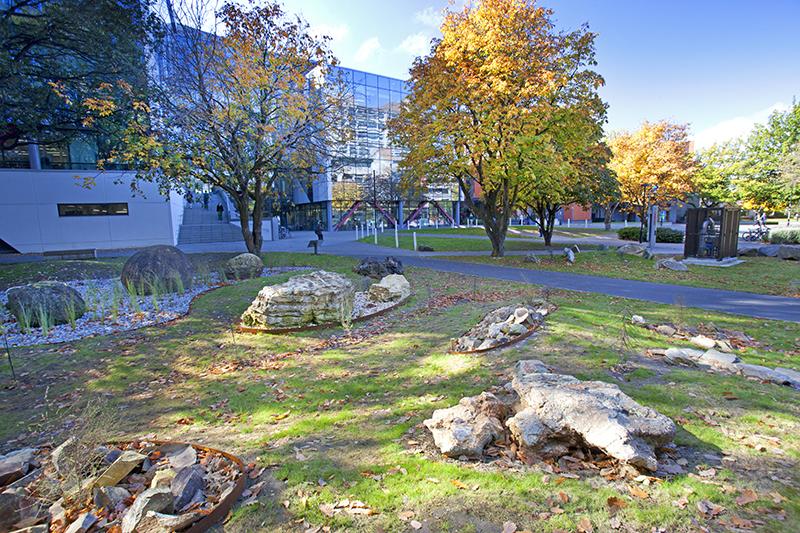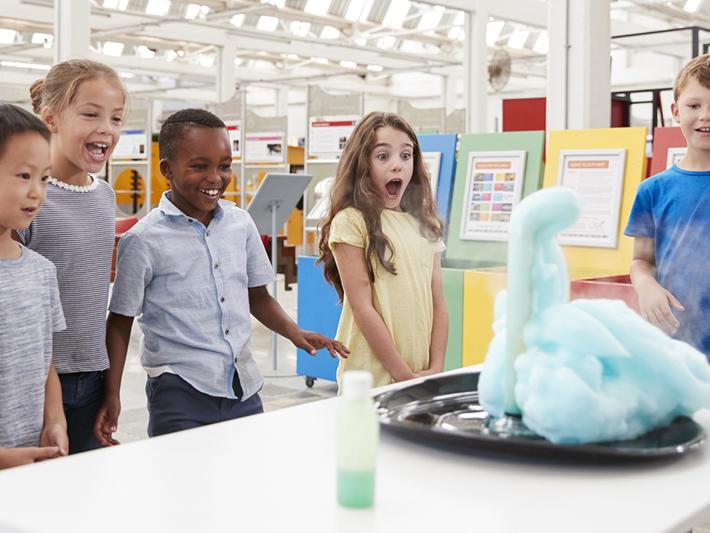Skills in 3D spatial awareness are declining among the general populace due to lifestyle changes such as reduced walking or biking and increased reliance on GPS. Spatial skills are a critical competency for success in science, technology, engineering and mathematics (STEM) fields. In the geosciences, spatial skills are a non-negotiable, but teaching these skills poses a major challenge for educators.
Geology is not the study of rocks, but the study of our planet Earth – what it’s made of and how processes shape it through deep time. Field geology students often struggle to visualise the broader landscape context of the landforms and rock formations they study, as it’s difficult to perceive both a bird’s-eye view and the underground structures while on the ground. Geology is about interpreting these features to understand Earth’s dynamic processes, requiring strong 3D spatial skills developed through repeated field practice and map use. However, as global geoscience enrolments decline, the discipline faces challenges in attracting students and equipping them to tackle complex spatial problems vital to addressing global issues such as climate change, resource management and natural hazards.
- Dreaming of tuī returning to campus
- How to get students interested in interdisciplinary work
- What work-based learners need from sustainability education
To overcome these challenges in geoscience education, we must adopt innovative, engaging teaching methods that are both future-focused and practical. This means blending digital technologies with hands-on, tactile experiences to build students’ confidence in solving complex, interdisciplinary spatial problems. By removing barriers to learning and making geology more tangible and accessible, we can better prepare students for the workforce while sparking curiosity. A central element of this approach at the University of Canterbury (UC) is the creation of the UC Earth Science Garden, an on-campus resource designed to bring the field directly to learners.
Reimagining geology education for today’s learners
While traditional geology rock gardens often display disconnected rock samples in a static, museum-style format, recent approaches favour interactive, miniature landscapes where students can solve geological problems. The science garden embraces this modern model, enabling students to practise essential field techniques – such as rock identification, mapping and 3D visualisation – on campus. Students can collect both qualitative and quantitative data that can be further analysed by laboratory methods and digital visualisation tools. Designed for accessibility and flexibility, it uses features such as map puzzles and rock relationships to connect learners to the idea of what makes a landscape and address key challenges in geoscience education: limited field time, unequal access due to personal constraints, and the difficulty of translating textbook diagrams into real-world 3D spatial understanding. By bringing the field to students, the garden supports inclusive, hands-on learning and deeper critical thinking.
The UC Earth Science Garden is New Zealand’s first, and one of only three fully comprehensive map-based teaching rock gardens worldwide. As a keen photographer, gardener and lover of graphic design, I took great inspiration from the Geoscience Garden at the University of Alberta, Canada, and the Monash Earth Science Garden in Melbourne, Australia. Working with quarry owners, iwi advisers, UC staff and contractors, we selected more than 200 rocks representing 15 key South Island lithologies, some weighing more than six tonnes. The arrangement is a walk-through miniature of Te Wai Pounamu South Island, focused on the Canterbury and West Coast regions. Greywacke belts flank a schist Southern Alps, the Alpine Fault trace bisects the garden, offsetting the unique rock dunite, a climate-change-fighting rock that also becomes our most treasured rock taonga (“treasure” in the Māori language), pounamu (New Zealand greenstone). Large spherical concretions hold ancient marine reptile bones, and our local Banks Peninsula is brought to life by an interactive mini volcano. This turns the campus lawn into a living laboratory, starting with the rocks, layering on native and endemic plant species, representative of the regions and the rock types.
With its rocky skeleton in place and native planting under way, potential collaborative projects include exploring settlement of native stick insects and skinks, joint installation projects with the department of civil and environmental engineering and School of Product Design, installation and information displays of the cores from the campus ground source heat pump project, weaving relevant pūrākau (traditional stories) of the regions and rock formation, and exploring the soils and ecology links among rocks and regions with the School of Biological Sciences. Ultimately, this will also set us up for directly integrating with the 3D digital modelling technologies we are already using in a range of our courses.
Beyond timetabled use, the garden has become a social hub. It attracts school groups, conference delegates and casual visitors who often leave with a new appreciation of our dynamic whenua (land). School and other outreach resources are in development, as well as educational geocache sites.
From directly addressing a foundational challenge of developing 3D spatial skills, the UC Earth Science Garden is growing to bring the field to every learner, every day, cementing spatial reasoning and sense of place, fostering inclusivity and celebrating Aotearoa’s geological heritage in living stone.
Katherine Pedley is a lecturer and Geology 100-level coordinator in the School of Earth and Environment at the University of Canterbury, New Zealand. She led the UC Earth Science Garden project.
The University of Canterbury is the host of THE Campus Live ANZ “Local roots to global reach: Shaping ANZ universities’ future” on 2-3 September 2025.
If you would like advice and insight from academics and university staff delivered direct to your inbox each week, sign up for the Campus newsletter.




comment